Importance of Collaboration in Education
Collaboration is important in the education field for both students and instructors. When collaborating with others it allows insight from different perspectives and backgrounds. As well, students can inherit other traits such as teamwork and problem-solving. Learning collaboration at a young age allows the students to then grow up and be more prepared for the work field as collaboration is something needed in everyday life.
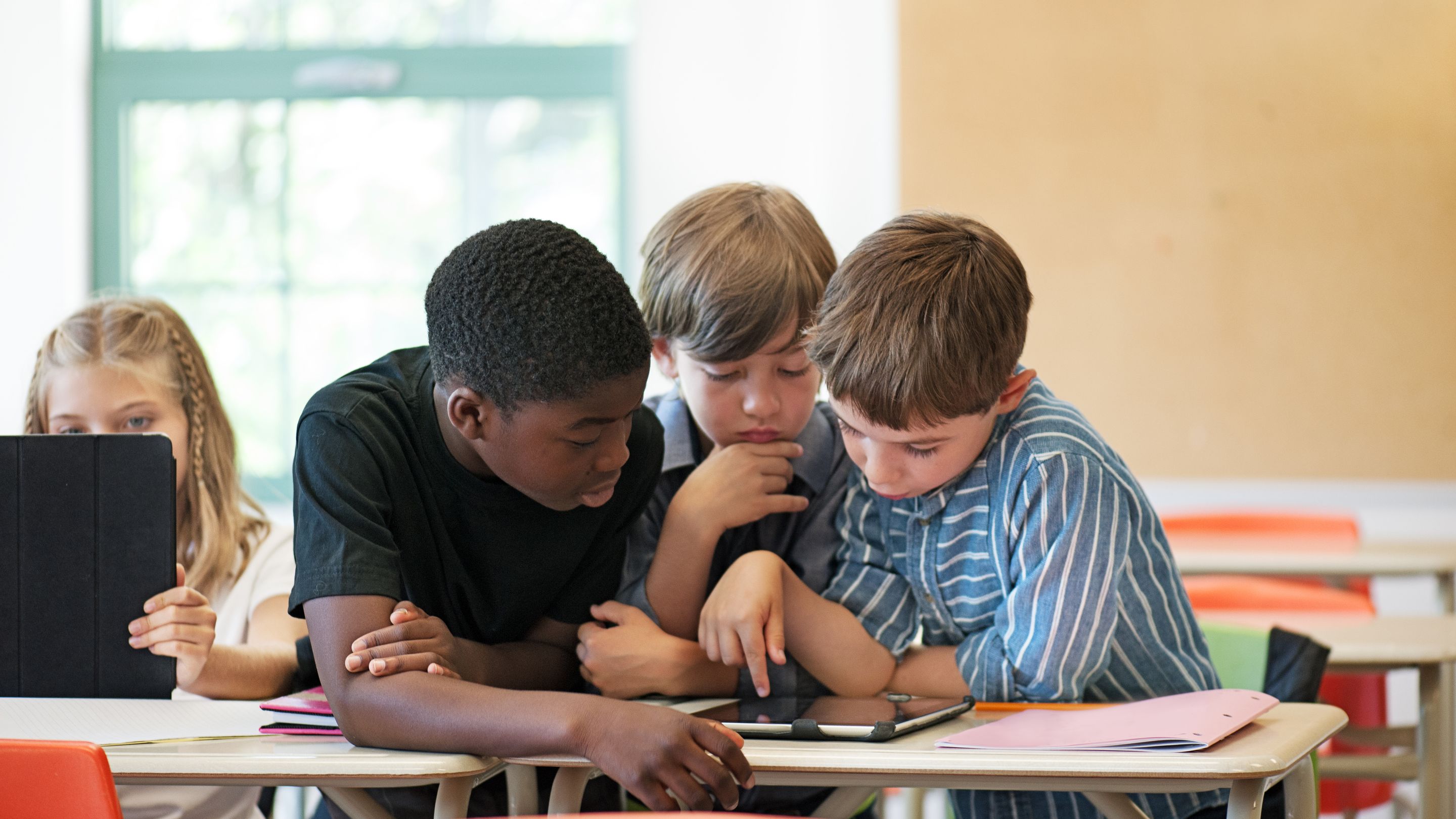
Teamwork is important, it is something all students can benefit from. These students are exploring their skill sets to then collaborate together.
When collaborating in schools it is important to be open-minded to working with anyone and everyone. Librarians are often overlooked during the collaboration process. Although, they have great resources that could be applied to help better students and faculty.
Collaboration is one of the many traits needed to accomplish success for the students and teaching ability. If there is no collaboration then skills will not be taught to the students and they will have a hard time achieving those skills as they grow older and are put into positions where those abilities are needed. Teachers also need to collaborate to provide the best information and ways of teaching that the instructors may not be aware of, and will only be aware of if they work with others.
Why Teachers Need to Work Together
Most teachers expect their students to work together whether that be by assigning them into groups or implementing the infamous rule of “ask 3 before me” which, in my experience, just led to a silent classroom. Teachers encourage students to work together to find the answers to what they need, so why do teachers not do the same? Why would some teachers insist on making their own lessons and worksheets from nothing or struggle to help a student in need without asking for advice? A teacher who does not collaborate is stunting their own growth as well as that of their students. In an article by Damon Torgerson, he describes the importance and benefits of teachers being active collaborators in their schools and districts and how teachers can promote collaboration amongst their peers.

So Why Should Teachers Collaborate?
- Changes the School Environment
Teachers are constantly stressed having to carry the weight of taking care of the next generation on their shoulders for half of their day, 5 days a week. It is very easy to become frustrating, lose your temper, not keep promises, and so on. When teachers work together, share their resources, and share their experiences with each other, they can start to build meaningful work relationships. When teachers can lean on and support each other, it changes how they come into work every day. Students can tell when their teacher is not “in it,” so do not be afraid to lean on someone who understands you if it will keep your classroom environment healthy

2. Reduces Stress and Teacher Burnout
As mention, once the work begins to pile up, teachers can very easily begin to drown. If they work together to support each other, they can begin to lift some of the stress off each other’s shoulders. Think back to when you were in school as a student. Part of the fun about being in school was seeing your friends and if you had a bad day at school, at least you saw them right? So why should it be any different as a teacher?

3. Sharing Your Strengths and Learning from Others
As a teacher, you are an expert in what you know and there may be other teachers in your school who need you. Maybe the math teacher wants to do a research project with students, but they are not sure how to get them started. If you are a Science, History, or English teacher you must have some knowledge about research projects to share, so share it. You could open the door for students to have unique cross content experiences and open yourself up to new ideas from people outside of your field.

4. Stay Up to Date
Education is always advancing with the use of technology and educators may not always have the time to research new methods of teaching or new websites to use in their lessons. It can be so easy to fall into a habit of “doing what works” and not “reinventing the wheel.” But there are so many ways to facilitate learning that can be engaging for the student as well as the teacher, so reach out to your colleagues and see if they know of anything that may be of interest to you. Create a Facebook Group where you can share links and ideas with each other quick and easy, so you do not fall behind on the trends.

5. Professional Development on Your Own Time
As mentioned, educators may not always have time to do research on new activities or questions they may have. They may not have time to wait until the next professional development meeting to ask the questions they may have to their peers or supervisors. Reach out for help when you need it. Be proactive and use your biggest most accessible resource, a.k.a. your peers, to help you along the way and I am sure they could use your help as well.
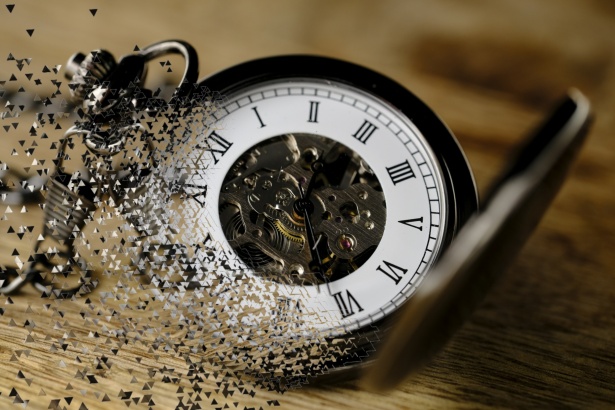
6. Improved Student Outcomes
As mention, students can tell when teachers are not doing well, are not passionate about their work, or are having trouble with other teachers. This ultimately does affect how they perform in your classroom and can actively discourage them from not only completing their work, but reaching out to their teacher for help. If teachers openly collaborate and create a safe and productive work as well as teaching environment, students will be encouraged to work together with their peers and teachers. Also by diversifying your own teaching methods and practices, you are creating a much more unique and enriching learning experience that can reach a broader audience and support all types of learners.

CLICK HERE TO VIEW HIS ARTICLE FOR MORE INFORMATION ON HOW TO EFFECTIVELY COLLABORATE AS AN EDUCATOR
Thank you for reading!
Follow me on Twitter at @IreneOrtiz001
The Importance of Web Filters
Irene Ortiz | May 29, 2023
Have you ever been connected to a school’s network or logged into your own district given email and tried to access any websites just to be met with an error or blocked message? When I was in high school, I could not access Youtube when I was logged into my school Gmail account and it was very frustrating when it came time to do research for projects. I did not understand why my schools growing up put so many limitations on the sites we could reach. I always assumed it was so we did not look up anything inappropriate, but a brief article by Nicole Bixler titled “The Benefits of Using a Web Filter for Digital Learning” introduced me to a few ways in which web filters actually support education.
While schools are required to have some sort of web filters to ensure that students are not accessing inappropriate or irrelevant content, it also protects students. Online, everyone is open to things such as data leaks, tracking, identity theft, harassment, and cyberbullying and young children are some of the biggest victims. In today’s age where everyone feels they need to post everything online, we often hear of young children being targeted online by their classmates or even strangers. By limiting their access to certain sites such as social media sites, students are less likely to engage in harmful internet behavior that can hurt themselves or others.
Bixler also discusses how web filtering also provides students with valuable skills such as research, data analysis, collaboration, and focus. With limits on sites that they can access, they are forced to do further research on their topics and look for their answers using sites they may not have thought to use if they had immediate access to sites like Youtube, Reddit, or Wikipedia. Not all schools block these sites or familiar sites, but having them blocked keeps learners from getting distracted from their tasks. When students are unable to find the answers to their questions, they ask questions to their peers or communicate with their teachers and work together to find a solution. Though they may not appreciate it now, web filtering when done correctly can actually teach students essential skills and online safety that they may not otherwise receive with full internet access.
CLICK HERE TO VIEW HER ARTICLE FOR MORE ON THE BENEFITS OF WEB FILTERS
Thank you for reading!
Follow me on Twitter at @IreneOrtiz001
AI INTELLIGENCE IN OUR CLASSROOMS
As we progress into the new age of technology, we are prone to creating unique experiences that will benefit us in the future. These experiences are being brought to the newer generation. It’s been brought to where it all starts; In the Classroom.
The tweet above (and linked) brings forth the start of Artificial Intelligence and the future of teaching and learning. The Office of Educational Technology states as its core message:
” The U.S. Department of Education (Department) is committed to supporting the use of technology
to improve teaching and learning, and to support innovations throughout educational systems.”
Bringing Artificial Intelligence into schools and classrooms can benefit the students, teachers, and the education system. There are many possibilities to look upon, but here are the more important ones.
≿━━━━━━━━━━━━━━━━━━༺❀༻━━━━━━━━━━━━━≾
Personalized Learning Artificial Intelligence can tweak instruction for every student in view of their necessities and inclinations.

Smart Tutoring Systems powered by artificial intelligence can provide students individualized guidance and support, enhancing their learning and comprehension.

Improved Collaboration Tools for artificial intelligence can make it easier for students to work in teams, collaborate on projects, and learn from each other.

Streamlined Administration Administrative tasks like scheduling and grading can be automated by artificial intelligence, allowing educators to concentrate on teaching.
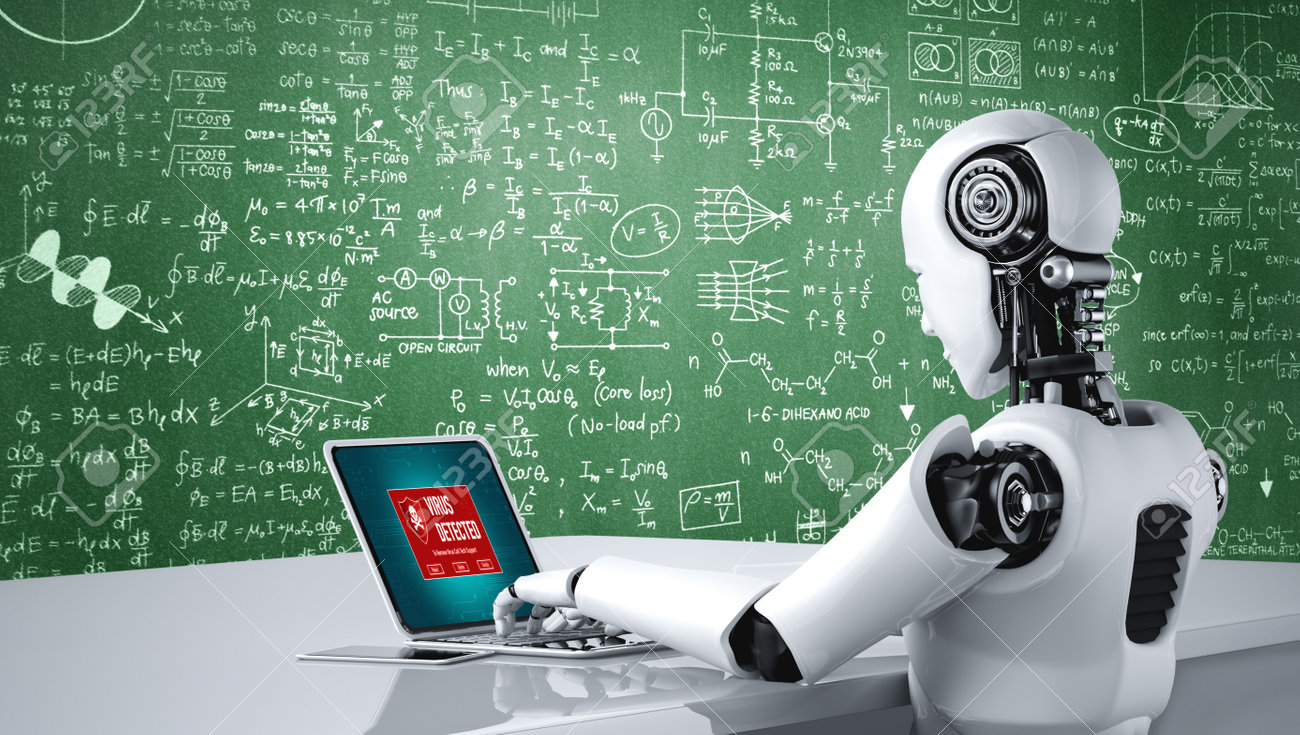
Informed Decision Making Artificial Intelligence can break down student execution, participation, and conduct information, giving bits of knowledge that assist teachers with pursuing better choices.

Accessibility and Inclusivity Artificial Intelligence can help understudies with special needs, offering customized help and versatile tech.

Teacher Development Artificial Intelligence can uphold teachers’ expert development by suggesting assets and giving criticism on their education procedures.

≿━━━━━━━━━━━━━༺❀༻━━━━━━━━━━━━━━━≾
Coordinating Artificial Intelligence in schools can further develop training quality, draw in students better, and support educators in their significant work.
And now, with this information in front of you, how do you feel about AI being a part of classrooms?
For more information about Artificial Intelligence in classrooms and what could be done, the hashtags #ArtificialIntelligence & #aiclassrooms are your links to go. ❤︎
Collaboration With Educational Technology
In today’s world, it is imperative that educators take advantage of innovative technology that can help students learn. One way technology helps students learn is through collaboration. Collaboration has been a part of education for a long time. Group projects have always been utilized in schools to make students become comfortable working with others. Through collaboration, students are able to take on a more dynamic role, where they learn by interacting with their peers and sharing ideas to solve problems and work towards common goals. This has been shown to increase engagement, which will lead to better educational outcomes.

An article posted online by EdTech Magazine describes the necessity and effectiveness of integrating technology in educational settings to foster collaboration. This article addresses how during the pandemic, the distance-learning approach forced teachers to adapt and incorporate tech tools to facilitate online learning. Some of the tools the articles mentions are Google Classroom and Microsoft Teams. These programs, “…allowed students to work together on shared documents and communicate easily with their peers and educators” (Kolber). Having worked on shared group projects with Google Drive through online collaboration, I can confirm that tools like these are easy to use and extremely helpful for working with others remotely. Students can work together on projects, ask each other questions, have access to class material, and ask their teachers questions all from their computer. These tools are an extension of the classroom environment and give students a new medium to learn through that they can have access to from home. The article also mentions how FlipGird, PearDeck, and Minecraft: Education Edition are effective tools that foster collaboration and students have a lot of fun working with.
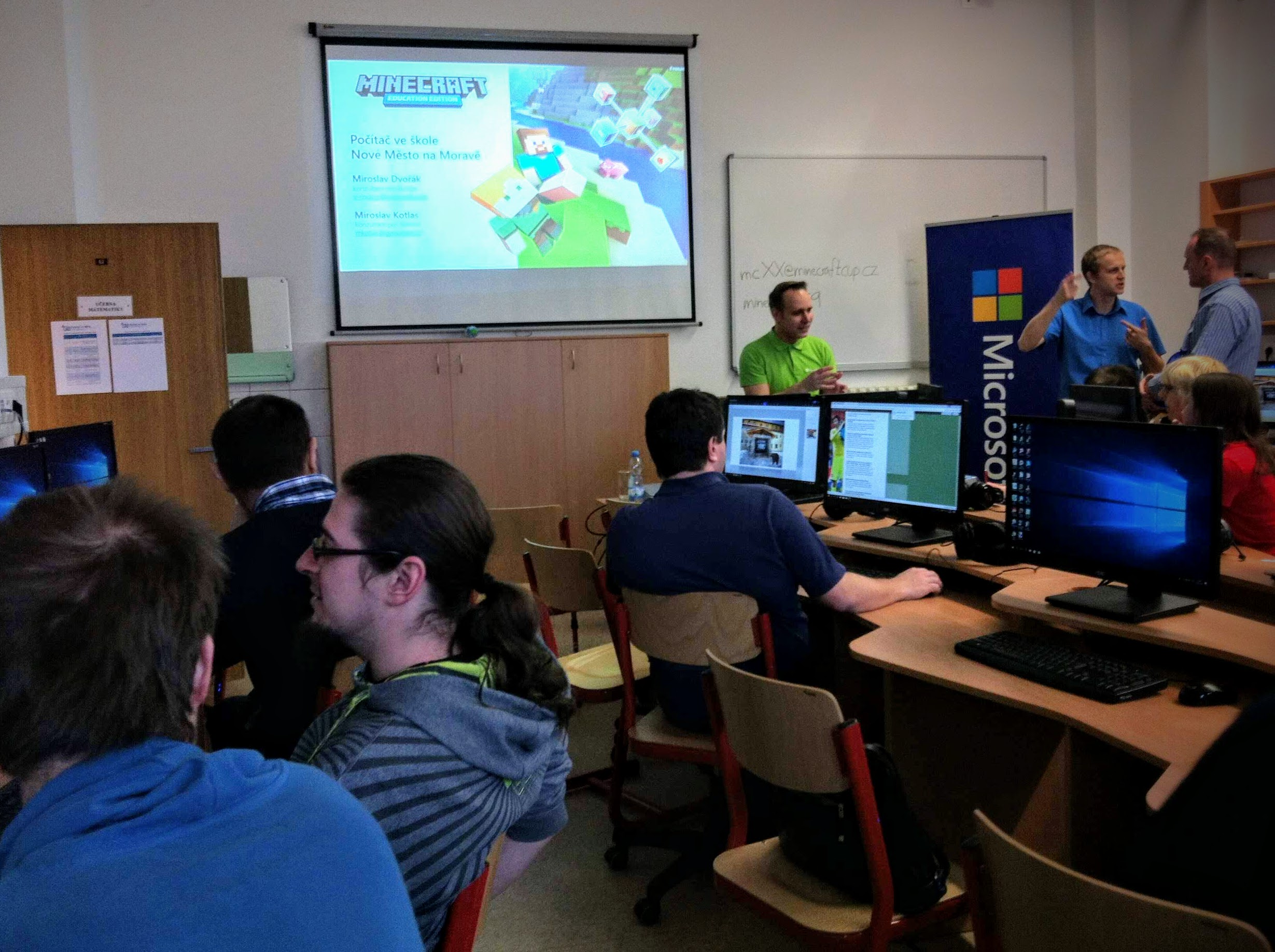
These tools are just some of the innovative technology that are used in education to foster collaboration. When used appropriately, these tools can help students build collaboration skills in a learning environment. They give teachers a new, digital mode to use in their classrooms that may be more effective than more traditional methods at getting students to work together. The possibilities and capabilities of educational technology are exciting for education and they will play a big part in schools going forward.
Collaborating for the Future
I found an article on twitter that goes over innovations that are being made in the world of education. As the world is advancing, we as educators, must advance with it to ensure that the future generations are getting a good education. By using our time wisely and not treating the summer as time away from the teaching profession we are able to keep up to date with new ways of teaching and our hone skills.
Some ways that we can expand our horizons are by connecting with others, innovating leadership, questioning why things are done a certain way, and encouraging students to use technology. By connecting with other we can expand out learning network, and if we use social media like twitter new ideas are only seconds away. Innovating leadership will allow for students to work together and create a shared vision. Questioning why things are the way they are helps build critical thinking skills that can show new perspectives and allows the students to be taught in a forward-thinking manner. Encouraging the use of technology allows students to engage with lessons in different ways and still facilitate a learning experience.
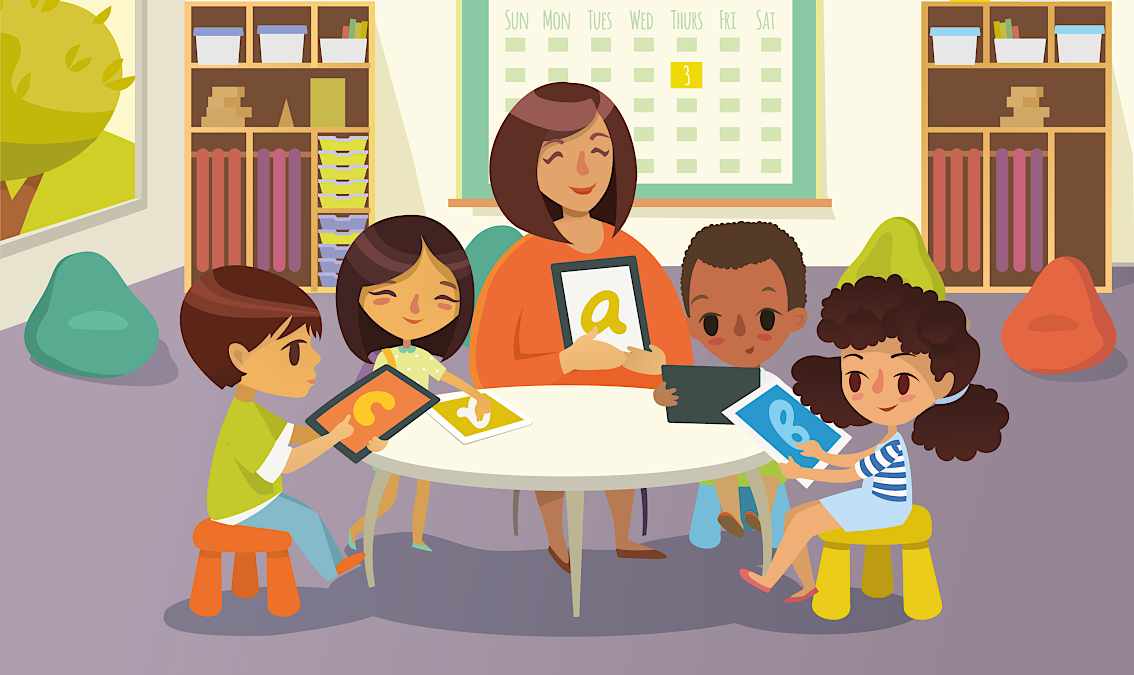
Everything in the article points to collaboration as the focal point of education moving forward. As teachers we can get together and talk about different ways we’re teaching. Then once we’ve tried them out, we are able to give feedback on what did and didn’t work; allowing us to improve lesson plans. Getting students to work together allows them to build collaborative skills that they will use throughout their lives and allows them to learn the lesson together.
Young Interpreters Project
I came across this mission while scrolling Twitter for a post on collaboration in education. Collaboration in education happens every day in every school, but there aren’t always articles about it, which was the challenge. When I read about this project, I thought it was admirable.
There have been waves of migration in Europe, causing students to be in schools where their native language isn’t taught. This project would aim to train students to become “Young Interpreters” to the new students. The students must undergo official training to ensure they are well equipped to serve the incoming students. This project would have six partners from five countries participating, all of whom had faced this education challenge.

The incoming students will feel more comfortable entering a new school with an unfamiliar language if they know a peer will translate for them. This also allows for peer-to-peer learning, which is crucial in this type of environment. The new student will be able to develop new skills with less pressure and still learn new information being set up for success.
The idea behind this project is to recruit 120 student interpreters in five countries and up to ten languages which can reach so many students!
If you click the impact report, you can see they’ve surpassed their goal. They’ve supported almost 400 new students in 19 different languages. They even included a few case studies to show growth which was really neat.
UnidosUS’ Padres Comprometidos Program Helps Latino Parents Improve Digital Literacy Skills
The Office of Ed Tech Twitter account posted this article, detailing UnidosUs’ new program, Padres Comprometidos. UnidosUS is the largest nonprofit Latino civil rights advocacy organization in the U.S. The goal of this program is to help narrow the digital divide that is often an obstacle blocking Latino parents’ ability to advocate for their childrens’ education.

Many parents in hispanic communities lack the necessary technology to communicate with the school system and stay engaged, or otherwise, do not understand how they can take advantage of the technology they have access to. The Padres Comprometidos Ed Tech Program offers resources to parents and guardians to teach them how to use common digital platforms and learning management systems used by schools. The program works with schools, districts, and PTAs to empower parents with digital skills so that they can build strong a strong relationship with the school and be fully invested in their children’s educational success.
With the increased use of digital tools in education, it is imperative that parents are equipped with the skills and knowledge to best support their children’s learning. Underserved communities with large Latino populations may suffer as schools integrate technology further. Programs such as these help to alleviate that issue and make a positive impact on the educational outcomes of children who grow up in these underserved communities.
A.I. Intergration
In an article I found about Artificial Intelligence, there is a discussion about how A.I. can be used to help the students and make the learning environment of all schools more accessible. Making it easier to communicate with students that are multilingual learners or students with disabilities. A.I. can be used to help students learn at different rates instead of going at a rate comfortable to the majority, with might be to fast or to slow for some learners. A.I. also has the ability to adapt to a student’s answers, instead of marking an answer to a question incorrect of correct, A.I. is able to adapt to a student’s learning process, these adaptations may allow the student to become stronger in the classroom by working with their strengths and finding ways to overcome weaknesses. To go along with not just marking a question right or wrong, A.I. can give feedback frequently in order to improve the teaching and learning experience.
The article also goes over the fact that teachers are not being replaced. It reminds us that we teachers are the ones applying A.I. to lessons and that when applied A.I. is going to be based on established, modern learning principles, use the wisdom of educators, and should use the expertise of educational assessment to improve fairness and detect bias.
I think the article points to two major problems that need to be overcome. The A.I. system producing inappropriate or wrong ideas that could amplify unwanted biases; and, strengthening the trust that educators have in A.I. and its ability to be used as a teaching tool. These two problems can be solved with time (teachers using A.I. and seeing how its functions can be applied and research and development of A.I. from the manufacture) and specific guideline set into place, dictating how A.I. can be used safely and appropriately in the classroom.

Virtual Reality in Classrooms, What Fun!
As we may know, there is a significant rise in technology. Nowadays, technology can either be seen right in our own homes, right outside our windows, or in our own hands. With the rise of technology comes the inspiration for new ideas. We all love our phones. We all love playing games on our phones, reading, writing, and even watching movies on our phones. And now, thanks to new technology, there is a way to bring all that to us in a new fun experience.
Virtual Reality, better known as VR, is precisely how it sounds. A reality that is not real but is made to be with the hard work of professionals. With these new experiences, millions of people have begun to submerge themselves in the newfound experience. Being able to go for a run right in the comfort of your own home doesn’t sound too bad. But, with more work, there is a way now that not only adults but children are able to experience and learn new things, even in a classroom. VR is the future of our classrooms.

With the rise of Virtual Reality in classrooms, there are bound to be people who would prefer to avoid the idea of technology running the classroom. They may be scared that their children will become addicted to technology. Or they are afraid that technology does not teach as well as actual humans do. While these are valid concerns, VR can bring many offers to students.
The article states,
“Students expressed enthusiasm for learning with VR, with 87 percent of all responses indicating that the VR lesson was useful, enjoyable, and something students would like to learn with in the future “
Flynn, Catt, and Peter Frost. “Making VR a Reality in the Classroom.” EDUCAUSE Review, 16 Apr. 2021, er.educause.edu/articles/2021/4/making-vr-a-reality-in-the-classroom.
So, with that enthusiasm comes the progress.
The benefits that VR in classrooms may bring to the table may include the following:
Enhanced Participation: Students are captivated by virtual reality and encouraged to learn actively. Understudies can investigate and connect with subjects like history, science, and topography, making picking up drawing in and intelligent.

Experiential Learning: Virtual reality (VR) enables students to participate in experiential learning by simulating actual events. Students in engineering and medicine can practice procedures and designs, gaining confidence and practical knowledge.
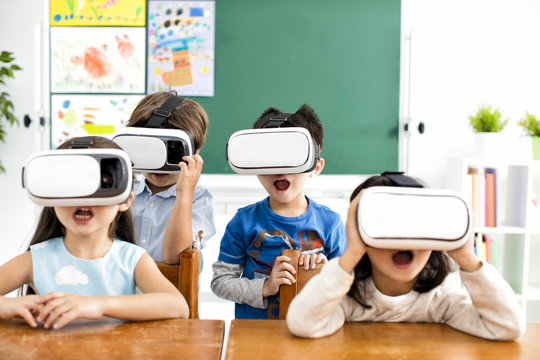
Access to Unreachable Locations: VR transports understudies to distant areas and periods. They can travel, learn about ancient civilizations, observe historical events, and cultivate cultural empathy.

Individualized Instruction: VR permits fitted growth opportunities to address individual issues. Platforms can be adapted to the abilities of students, providing individualized instruction, revisiting concepts, and immediate feedback.
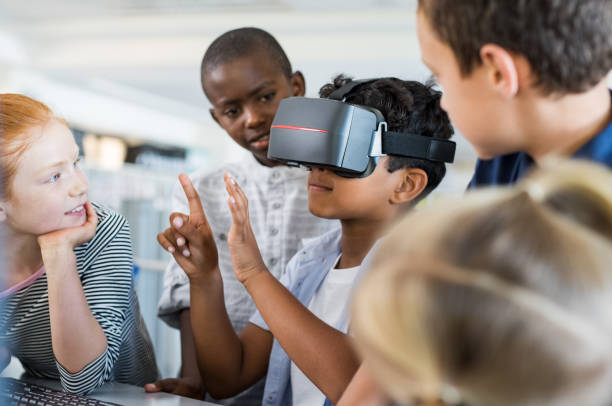
Social Learning and Collaboration: Students can collaborate, communicate, and solve problems in VR-facilitated collaborative learning experiences. They can interact with peers and experts from all over the world, fostering collaboration and cultural exchange.
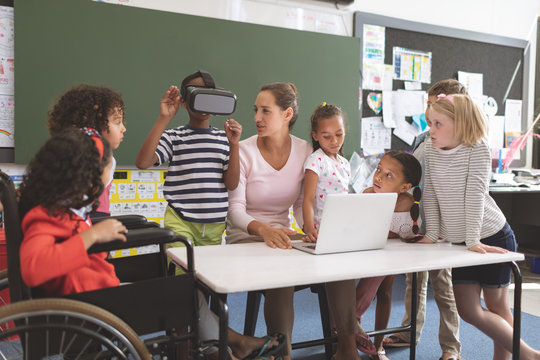
Better retention and motivation: VR further develops understudy inspiration and maintenance. Students are captivated by its immersive nature, which results in memorable experiences and increased engagement and knowledge retention.
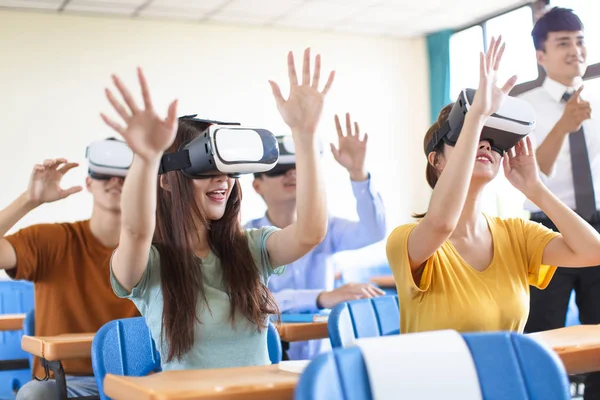
Virtual reality can possibly upset instruction by giving a vivid and intelligent growth opportunity. Using virtual reality in the classroom has numerous advantages. As this tech becomes more accessible, teachers should embrace its capability to establish a dynamic and viable learning climate that prepares understudies for future difficulties. Students can gain the knowledge and skills they need to succeed in the digital age by incorporating virtual reality into their classrooms.
I look forward to seeing the future with Virtual Reality in classrooms. We have the technology; we might as well use it.
Thank you!